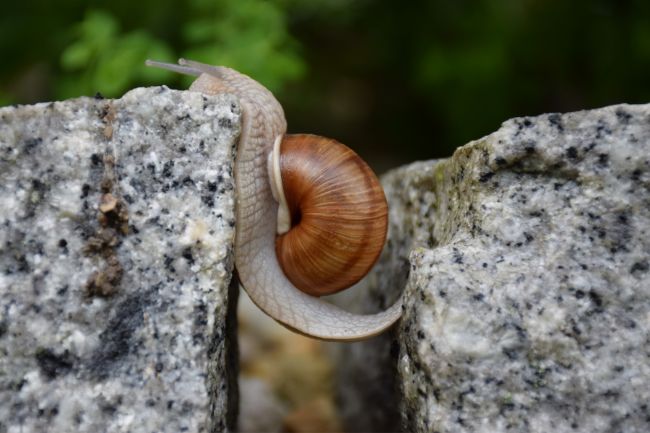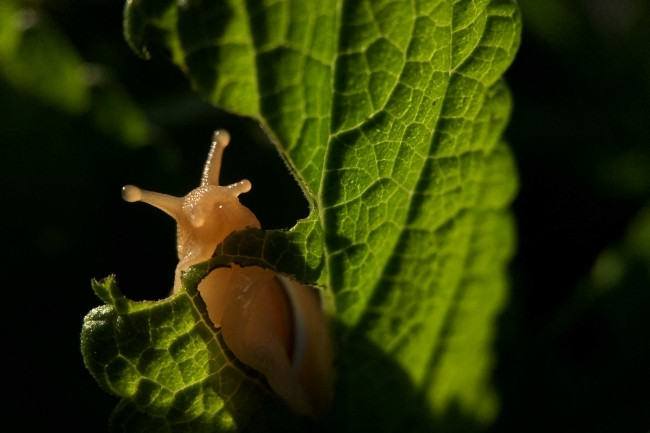Snails have lots of good reasons to emerge during and after the rain, including to avoid drowning, to feed and to travel. The conditions after rain can be particularly suitable to these molluscs, making it unsurprising that you often see larger numbers of them after a downpour.
Contents
After the rain

For most humans rain is something to be avoided. Too much of it and we can become soaked, which could lead to use becoming too cold and potentially even seriously ill. Yet, for many animals rain isn’t such a big deal, from frogs to ducks to worms, there are many creatures that appreciate a little damp weather from time to time.
One of the most obvious animals you might spot after a heavy downpour are snails. But why do these little creatures emerge after the rain?
| Snail Species | Description and Characteristics | Additional Information/Explanation |
|---|---|---|
| Garden Snails | Helix aspersa or Cornu aspersum | Garden snails are terrestrial snails commonly found in gardens and other outdoor areas. They have a coiled shell and a characteristic slimy trail that helps them move. They are considered a pest in gardens due to their feeding habits, but they also play a role in nutrient recycling. They are known to come out during rain or high humidity, seeking shelter in vegetation or under objects to avoid excessive moisture. |
| Pond Snails | Lymnaea stagnalis or Physa acuta | Pond snails are aquatic snails found in freshwater ponds, lakes, and slow-moving streams. They have a thin, elongated shell and a gill structure for respiration. They often come to the water’s surface or emerge from underwater vegetation during rain, likely for feeding or breeding activities. They have a specialized adaptation to survive in both aquatic and semi-aquatic environments. |
| Roman Snails | Helix pomatia | Roman snails are large land snails with a rounded shell that can reach up to 1.5 inches in diameter. They are often found in woodlands and garden habitats. Roman snails have a relatively slow metabolism and are more active during moist conditions, such as after rain or in the evening when humidity is higher. They are considered a protected species in some regions due to their declining populations. |
Also read: Here’s “Why Earthworms Come Out When it Rains”
To avoid drowning

Snails spend much of the time they aren’t busy feeding, hidden away in cracks and crevices. This is in part because they are so sought after by so many predators. Remaining out in the open for too long is a dangerous game, so instead they find handy places to hide, wherever they can.
This might be under logs, in rock crevices and within the soil. Such hiding places may be very advantageous when it comes to avoiding being eaten, but they are also often low down, and can quickly become filled with water, either rising from below or falling down from above.
While snails do like a certain amount of moisture, they still need to breathe, and too much water can lead to drowning. Therefore, as the nooks and crannies they have chosen begin to fill with water, they decide to make a break for it, coming out into the open.
While there may be some risks involved in moving to higher ground, at least they can escape the rising water.
No products found.
For foreign travel

When you head out into your garden after a damp night, one of the first things you might notice is the silvery trails left behind by the busy slugs and snails. This ‘slime’ is a kind of mucus that snails release from special glands. This helps lubricate their way, aiding movement.
Snails have one large foot, and move through a wave-like movement, caused by contracting and releasing their muscles. Producing mucus helps to reduce the friction between them and the surface they are moving across, therefore helping them to move further while using less energy.
Wet surfaces both help to increase the effect of the mucus, and reduce the risk of snails becoming too hot and drying up. This is why you may see snails heading across roads after wet periods. Normally a hot, dry road surface can be a serious obstacle for a snail, but with a little rain it can be much easier to cross.
Also read: Keeping Snails as a Pet: Sea, Land & Exotic Species
To eat

Like all animals, snails need to eat regularly to survive. While they are happy to eat in the rain, heavy rain may make it more difficult or dangerous for them to feed. Therefore, there may be times when they cannot eat due to the rain. Once the rain stops they can therefore head straight out to eat, to refill after their hungry period.
To avoid predators
Snails are a group that is often at the bottom of the food chain, with a long list of predators that will happily make a quick snack out of these defenseless molluscs. Most snails have no real way to protect themselves other than remaining hidden.
Avoiding predators can involve hiding away physically, or just choosing to be active at times when their predators aren’t. Many of the snail’s predators avoid coming out in the dark and the rain. Therefore, this is a perfect time for the snail to get out and about and start eating. Which is why you’ll often see snails feasting on your favorite brassicas at night.
Also read: Snails & Their Shells: Everything You Need to Know
Because it’s time to be active
Finally, snails may choose to come out when it rains simply because this indicates a change in conditions. Many snails become inactive during the winter, when colder temperatures may make it hard for them to survive, or in dry periods, when lack of moisture risks them drying up. Both of these harsh conditions may end when rains arrive, indicating a change of seasons.
| Reasons | Explanation | Additional Information/Explanation |
|---|---|---|
| Moisture Availability | Snails require moisture to prevent dehydration. When it rains, the increased humidity and moisture on the ground provide a favorable environment for snails, prompting them to come out of their hiding places. | Snails have a delicate body structure and rely on a moist environment to keep their bodies hydrated. The rainwater provides them with the necessary moisture to maintain their physiological functions. |
| Improved Movement | The moist ground reduces friction and makes it easier for snails to move. They take advantage of the wet conditions to explore new areas, search for food, or find potential mates. | The mucus secreted by snails acts as a lubricant, allowing them to glide smoothly over surfaces. The rainwater helps to dilute the mucus and facilitates their movement, making it more efficient for them to travel and explore their surroundings. |
| Reproduction | Some snail species are more active during rainy periods as it coincides with their breeding season. The moisture stimulates their reproductive activity, and they venture out in search of mates. | Rainfall can trigger the reproductive behavior of certain snail species. They release pheromones into the air or leave chemical trails on the ground to attract potential mates. The rain provides a suitable environment for mating and ensures the survival of the offspring by providing adequate moisture for their development. |
Rain may also result in fresh growth, meaning there is food for the snails to eat. All of this means it can be a perfectly suitable time for snails to come to the surface.
Busy little snails
There are many reasons why snails may become more active after the rain, but the main one is that the conditions are suitable for them to thrive. So next time you notice all the snails out and about after the rain, don’t think of it so much as an invasion, just that these normally stay at home molluscs are getting out to enjoy the lovely weather.

